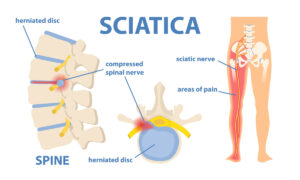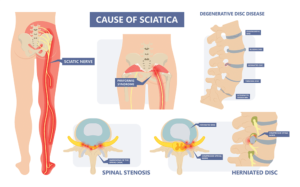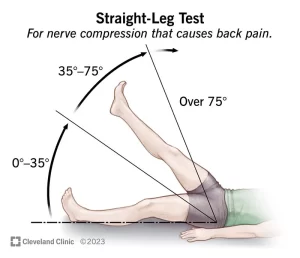Sciatica sucks. It’s very painful. Trust me. I’ve experienced it.
This post is to help anyone who’s dealing with sciatica and give you a better understanding of what it is, how to help you heal and prevent it. The recuperation process isn’t pleasant, but it’s doable and you can fully heal from it without resorting to drugs and surgery.
What is Sciatica?
Sciatica refers to pain that travels along the path of the sciatic nerve, the body’s largest, radiating into the legs, buttocks and lower back. It is caused by compression or inflammation of the sciatic nerve, commonly from bulging/ herniated discs, nerve irritation, spinal stenosis, and/or spasm of the piriformis muscle putting pressure on part of the nerve.
It’s actually a bundle of nerves that come from five nerve roots branching off from your spinal cord. The most common causes of sciatica don’t involve direct injury to a sciatic nerve itself, but rather to the nerves higher in the spine that join to form the sciatic nerve.

Symptoms
Sciatica pain can be almost anywhere along the nerve pathway. Pain, inflammation, muscle weakness and numbness in the affected side often follows a path from the low back to the buttock and the back of a thigh, calf and foot. This compression can lead to sharp, shooting, burning pain, tingling sensations, and numbness in the lower back, buttocks, and legs.
Common Causes
- Current or previous injury
- Normal wear-and-tear
- Excess weight or obesity can lead to back strains, pain and other issues.
- Having insufficient core strength- muscles of your back and abdomen (help anchor your back muscles)
- Your job. Jobs that require heavy lifting, a lot of bending, or working in awkward or unusual positions.
- Not using good posture and form during weight lifting, strength training activities.
- Diabetes. Type 2 diabetes increases your risk of diabetes-related peripheral neuropathy, damaging nerves that can cause sciatica.
- Physical inactivity. Sitting for long periods and a lack of physical activity

What to do. Healing and Prevention
Time, movement and rest are essential. Milder cases of sciatica generally go away on their own with time and self-treatment. It may take up to 6 weeks to heal. In the recuperation following initial injury, it’s important to help strengthen the body against re-occuring injury.
Chiropractic Care
Chiropractic is a holistic and drug-free approach that focuses on restoring the body’s natural alignment to alleviate pain and promote healing. It’s important to understand that while we’re addressing sciatica, chiropractic doesn’t diagnose, treat or heal anything and isn’t a get out of pain quick fix solution.
Adjustments remove interference in the nervous system so the body can properly coordinate all functions of the body, adapt, and heal. Gentle adjustments realign the vertebrae, allowing the spine to come into proper alignment, reducing pressure on the sciatic nerve, helping improve nerve function, reduce inflammation, providing relief from sciatic pain.
Additional Elements of Chiropractic Care
Decompression Therapy: Helps to stretch the spine gently. This technique helps create space between vertebrae, allowing herniated discs to retract and relieve pressure on the sciatic nerve.
Myofascial trigger point release can reduce muscle tension and inflammation around the affected area, providing pain relief and improving flexibility.
Exercise and Rehabilitation: Specific exercises and stretches to strengthen the muscles supporting the spine and improve posture. Regular exercises can prevent future sciatica episodes and enhance overall spinal structure.
Lifestyle Recommendations: Advice on ergonomics, posture, and lifestyle modifications to minimize the risk of sciatica recurrence and promote better spinal health.
Stretching and Movement Exercises for Sciatica
Cat cow, Knee to chest, Mckenzie exercises, Nerve flossing, Waking high knees
Foundation training exercises- check YouTube channel
Maintain good posture while you’re sitting, standing, lifting objects and sleeping.
Stay physically active. maintain a weight that’s healthy for you. Strength training, aerobic exercise, increasing core strength and flexibility are fundamental to healthy movement. Swimming


Ice affected area for 20 min intervals several times per day to help to reduce swelling and pain.
If you’re suffering from sciatica, chiropractic care can help you regain your mobility and comfort. Through gentle adjustments, decompression therapy, and strengthening exercises, chiropractors can effectively address the underlying issues contributing to sciatic nerve compression. Embracing a holistic approach to healing, chiropractic care empowers individuals to naturally recover and prevent injuries, and live a healthy, active lifestyle.